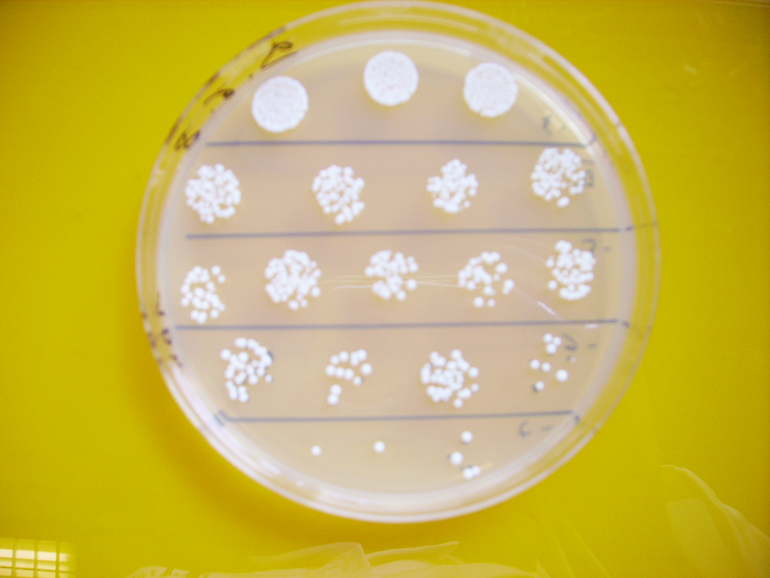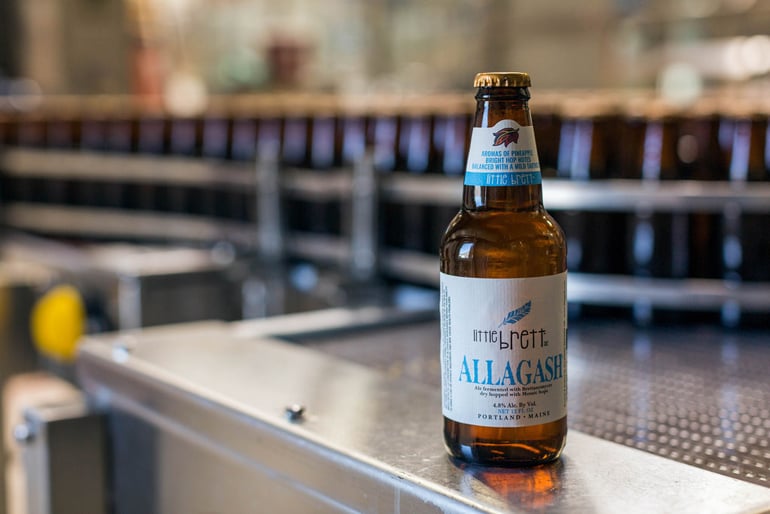Start 14-Day Trial Subscription
*No credit card required

What is Brettanomyces?
Mr. Brettanomyces lurks where you’d least expect – perching in the rafters of your brewery, watching. He moves almost weightlessly, soaring effortlessly with the lightest breath. He consorts with the insect kingdom, most notably fruit flies, who transport him without question, and worms his way into your wort, finding refuge in the dank crevices of your whiskey barrel or gradually inching along your pipes until he finds his prey. He guzzles your sweet nectar, leaving a reeking wake of questionable by-products in your beer. Yet, by many he is loved. Who is this mysterious, shadowy figure and what does he want with our ales?
Brettanomyces is the most notorious yeast in the game. Aficionados heap praise at his ovoid or sausage-shaped feet while the uninitiated run for the nearest clothes-pin to bar their noses from his odor.
He derives his name from a British scientist, N. Hjelte Claussen, who was researching contaminants in British beer for Carlsberg. Claussen published his findings around 1903, and coined the “brettanomyces” moniker, which is Greek for “British yeast.”
This may not have been the first time Mr. Brett was caught in the act, though. A yeast with similar characteristics had been isolated at the Kalinkin Brewery in St. Petersburg in 1889, and again ten years later at none other than Guinness’s aptly named “Chemist’s Laboratory.” Speculation from renowned British beer historian Ron Pattinson points to a desire not to go public in order to corner the market, as Mr. Brett could be coaxed into adding interesting qualities to export beers during secondary fermentation. These may be the basis for the surprising fruity qualities of foreign export stouts we see today.

Our pal Mr. Brett takes many forms, such as Brettanomyces bruxellensis.
What does Mr. Brett do to beer? Whatever he pleases. If he isn’t treated very delicately, he’ll stomp all over your brew and leave it a spoiled, funky mess. Acetic acid, one of his main byproducts, is a souring compound, which can be detected by aromas of vinegar, green apple and even paint.
Even when treated well, his work can be questionable, but the renaissance of Belgian beer in America has netted him his own BJCP style, simply titled Brett Beer. The hallmarks of Mr. Brettanomyces’ work include dry, fruity and funky notes, which can range from low to “straight out of the manure patch,” increasing with age. For the purposes of this style, funk is not intended to stray too far into dung territory. His style is often lightly tart, an aspect of work for which he will not take credit (tartness can be generally attributed to other souring agents often found in the same styles, like Oud Bruin and Lambic).
Aromatic notes can vary widely, depending on whether the beer is brewed fully by Mr. Brettanomyces, or if brewer’s yeast is also used, and to what degree the beer is hopped. Individual flavors may be hard to pick out, but they will undoubtedly transport you to Mr. Brettanomyces’ favorite place: the barnyard. You can expect mild notes of wet hay, often mingled with mild smoky and earthy aromas. Fruit is also a dominant characteristic, more prominent in Brett’s younger days, to the tune of tropical fruit, stone fruit and citrus. However, Mr. Brett’s personality can be subdivided into multiple sub-types, all of which will produce different end-results in both flavor, aroma and color. You just can’t put this guy into a box.

The hallmarks of Mr. Brettanomyces’ work include dry, fruity and funky notes.
While Mr. Brettanomyces doesn’t like to be classified, if you put him side-by-side with the same beer brewed without him, his work will be decidedly drier and more attenuated, with a lighter body and less depth and funk than Belgian wild ales, a style which he will participate in when he’s in more of a Jackson Pollock-type mood.
But you can’t rush him. Monsieur Brett, compared to standard saccharomyces (Satchmo?), takes his sweet time. What brewer’s yeast can do in days to weeks can take Brett months to years. Here’s what the King of Beer Writing, Michael Jackson, had to say about our mercurial protagonist:
“Saccharomyces is like a dog and Brett is like a cat. It’s a little less predictable. It’s going to do its own thing; it’s not going to come when you call it and sit when you say sit. If you can respect its individuality and suggest rather than dictate what it does in your fermentation, it can reward the brewer and the drinker.”
As MJ states, Brett is very hard to control, which is why it’s often better to let him hang around with his friends, lactobacillus and pediococcus, or blend him with regular yeast.
Lacto and Pedio aren’t exactly the same breed – they’re both bacteria, while Mr. Brett hails from the yeast, but sit them down and they’ll get along like old friends. Sometimes. When times are good, Lacto and Brett can work some real magic – Berliner Weisse is a good example. They get their tang from Lacto and Brett paints the delicate fruity funk into its wheaty depths.
Pedio may as well be Mr. Brett’s more volatile drunken uncle. When they get together Pedio can really rile up Mr. Brett, fanning his flames and helping to produce strongly acidic styles like Lambics and Flanders Reds. We’ll get back to the escapades of the “three musky beers” further down the line.
There are currently four scientifically recognized “personalities” (species) of Mr. Brettanomyces. The most commonly used are B. bruxellensis and B. anomalus, also known as B. claussenii and B. lambicus, respectively. Their use of aliases stems from a puzzling fact – once thought to be distinct species, they were more recently found to be genetically identical. Mr. B is, after all, the same person. Nevertheless, the two produce different results in beer.

Allagash Brewing Company in Portland, Maine employs Mr. Brett in a variety of its beers, including the eponymous Little Brett.
The other two, B. custerianus and B. naardenensis have yet to find purchase in commercial brewing, and not just for their less-than appetizing names. They simply haven't proven to provide reliably tasty flavors – unless, of course, you're into "goaty" notes, which naardenensis is said to produce.
There’s much to be learned of Mr. Brettanomyces still. Perhaps that’s why he’s so intriguing. Like the most inspiring of artists and criminals, he is as liable to pour your dreams down the drain as he is to generate a spectacular vision of flavor. Join us next time for a more intimate look at the life of this most intriguing man-yeast, in all his triumph and disgrace.



